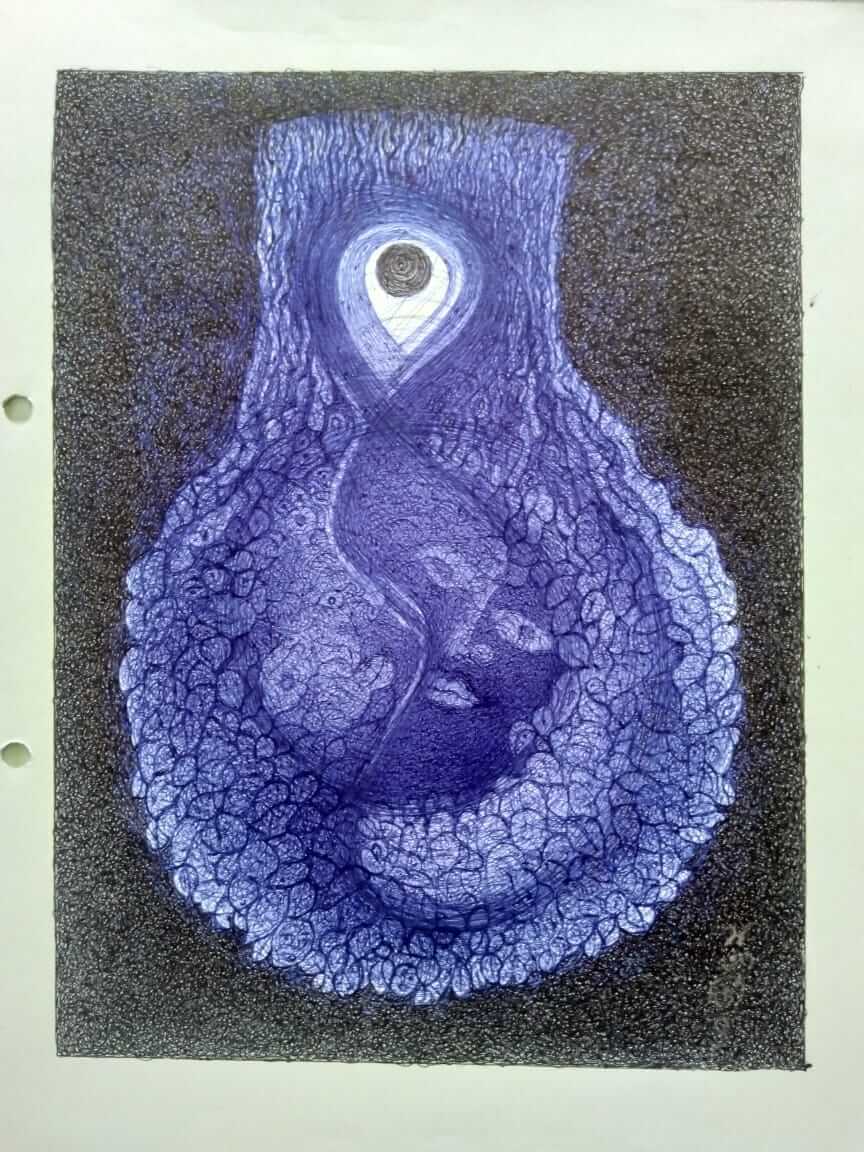Nilanjana retells the stories from the Srimad Bhagavatam, bringing alive the essential Indian wisdom of the yore. In the fourth part, she tells us about the remedy of the curse on Parikshit. Suka, the son of Sage Vyasa came to visit Parikshit. The king was delighted by his good fortune. He asked Suka the same question, “How does one, who is so close to death, go about washing away all accumulated sins?” Suka tells him the importance of devotion, through the stories of Narayana. “The truth is that even if one spares a muhurta (moment) sincerely, he is going to be free of the world of bondage.” Parikshit learns about the practice of Ashtanga Yoga (union of eight forms) that helps one during this time. Find out more about the remedy, in the weekly column, exclusively in Different Truths.
As if God-send, Suka, the son of Vyasa came to visit Parikshit. The king was delighted by his good fortune. He asked Suka the same question, “How does one, who is so close to death, go about washing away all accumulated sins?”
Suka smiled, “I have come here with the sole purpose of telling you stories about Narayana. Devotion to him can instantly free one from all sins. Mankind is so entangled in the worldly drama right from birth until death that they have no time to think of the Divine. The truth is that even if one spares a muhurta (moment) sincerely, he is going to be free of the world of bondage.
“King Khatvanga was in the heavens with the Gods when he came to know that he had one more muhurta to live. He rushed back to the earth only to meditate on the Divine and was immediately liberated.
“You have seven days, Parikshit. Let me tell you how to concentrate on Him. When one feels that death is not far away, one should appropriately be prepared to welcome death. To begin with, it is best to do away with the fear of death. Then one should ideally try and move away from those ties that keep him bound (family, relatives, friends and others). It would be best if one can leave his house and after having bathed in the holy river sit down to meditate.
“For any meditation, the mind has to be made steady. Pranayama (rhythmic breathing) assists in this. Then chant the mystic word AUM. Be careful, for the mind may try to slip into the world of sense-objects again and again. The practice of Ashtanga Yoga (union of eight forms) can help one during this time. Ashtanga Yoga highlights eight aspects that should be contained in anyone seeking redemption. These eight aspects are – Ahimsa (not hurting anyone or anything in thought or action), Astheyam (not stealing), Aparigraham (not willing to accept gifts from others), Brahmacharya (withdrawal from pleasures), Satyam (truth), Saucham (inner and outer cleanliness), Svadhayaya (diligent study of the scriptures) and Tapas (penance of body and mind).
“Following these eight steps leads one to Dharana (keeping the find calm, holding the breath with undivided focus on the form of Virat Purusha – the first form assumed by cosmic consciousness).
“In absolute Dharana, the tamasic (lethargy or inertia) or rajasic (restlessness) nature gives way to peace of mind. This leads to Dhyana (meditation).
“The Virat Purusha embodies in itself the past, present, and future. This form is, however, concealed by five elements – earth, water, fire, air, and space. Virat Purusha pervades the whole universe, from the nether regions to the astral regions. The form can be seen resting in Ananta (the infinite cosmic ocean). If one can invoke this form, as described in the Vedas, and meditate on it then the soul reaches the Divine after leaving the body. Before this, one should try listening to the stories of Narayana and singing about his glorious deeds.”
Suka smiled as the entire audience listened to him silently. He looked at Parikshit, “I will relate the Bhagavad Purana to you during these seven days and you will also be a channel for others interested in hearing the story.”
Sukha began reciting the whole Purana that was composed by his father Ved Vyasa…
[To be continued]
Footnote: Srimad Bhagavatam is often called the Bhagavad Purana. Authored by Ved Vyasa, the stories are about the various avatars (incarnations) of Lord Vishnu, also known as Narayana.
©Nilanjana Dey
Photo from the Internet.






 By
By
 By
By
